'Gardening is my art form:' After 43 years in the same gardens, woman has a spectacular palette
Dorothy Danforth’s Brown Deer gardens look as colorful as the way she describes gardening.
She can be heard saying, “a garden is like a canvas and gardening is my art form,” that “gardens are created according to the gardener's personality,” or “when you create a beautiful garden, you should share it.”
These aren’t just random thoughts, as her gardens were clearly created by someone with an artistic background. And they do fit her vibrant personality.
And she definitely enjoys sharing the gardens she’s been tending for 43 years.
In some cases, tours of her half-acre lot are planned, but there are also lots of impromptu tours.
“Sometimes I will be inside reading, and I look outside and I see people walking around in the yard. But it’s never a problem. It's just people who love gardening. Sometimes if I’m not busy I’ll come out and talk to them,” she said.
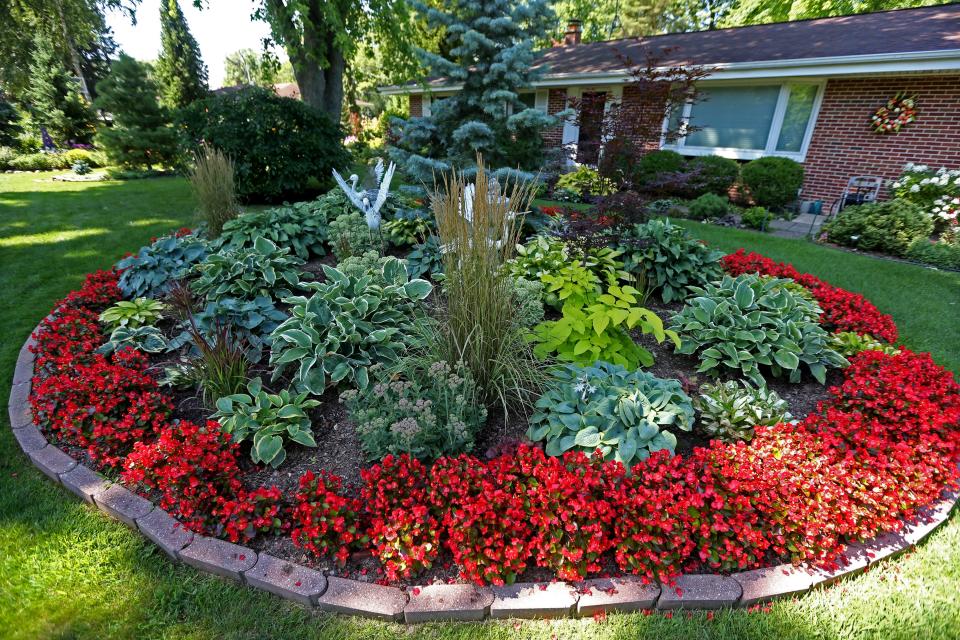
What makes her gardens so beautiful and unique are the layers of trees, bushes and plants that range in size from tiny to huge, that come in soft to bright colors, that accent the swerving flowerbeds that surround her home.
Danforth, who is well known in the gardening community, said one of her favorite spaces is a shade garden with plants in tones of blue she calls her “Rhapsody in Blue Garden” that includes conifers, grasses, hostas, sedum and artwork.
“All that is missing is piping in Gershwin’s music,” she said.
Another favorite is a hosta garden.
“In 1996 the American Hosta Growers Association decided to have a Hosta of the Year contest. Each year a great hosta is awarded this honor for its many wonderful qualities. I decided to have a bed with these hostas. I have them all.
“But my favorite is a big golden hosta called Sun Power” that’s not one of the award winners, she said.
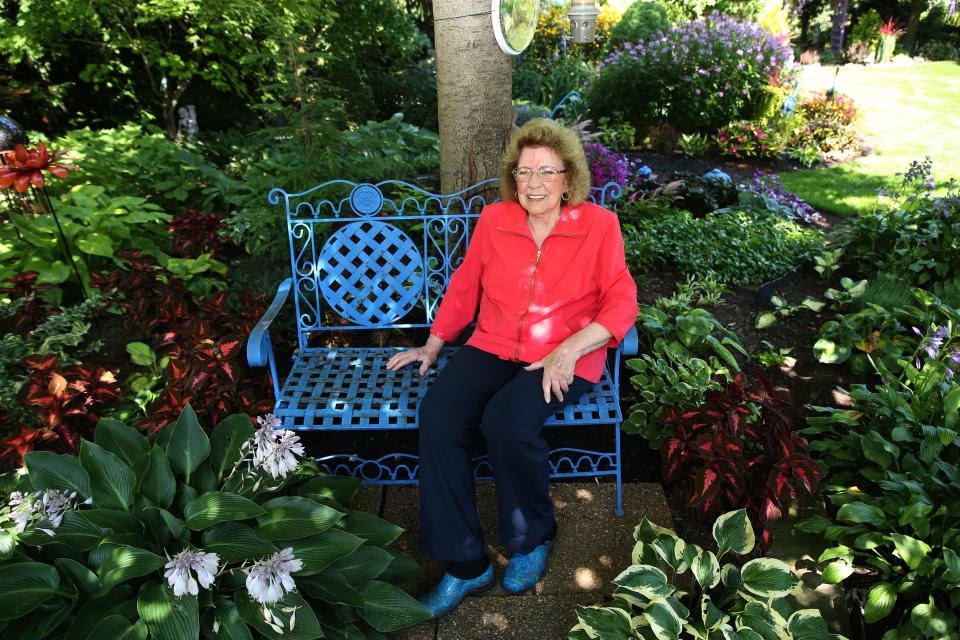
There’s also a garden bed along one side of her home she calls her “unorganized bed.” There she occasionally lets some flowers do what they want; for example the small clump of tall phlox that “decided it wanted to do its own thing” and started growing at the front of the garden bed.
There’s also a shade garden with no annuals in it.
“I don’t put any annual in there because annuals upstage other plants. I enjoy the beauty of my shade plants,” she said.
Danforth, who taught piano at Milwaukee Public Schools, then later at her home before she retired, said her gardens started soon after she and her partner, the late Gerald Friedenfeld, bought their home in 1978.
Then there were six trees and a lot of grass in the yard.
“I decided I wanted to garden. I bought a shovel and I went and bought a spirea, and I dug into the clay. I didn’t know you couldn’t grow plants in the clay. The next year Gerald dug out a garden bed and he dug leaves into the soil,” she said. By then she had learned that plants perform better in amended soil.
Over time she continued to learn about gardening, and continued to amend her soil. And soon her gardens were growing “foot by foot.”
To make them so lush, she created a large area behind a fence that holds five compost bins and a 3-by-6-foot trench that is 18 inches deep. The trench gets filled with fall leaves that are collected from throughout her neighborhood each year.
“I have been known to bring home over 100 bags,” she said.
In spring the compost is used in her gardens, and the leaves are ground up with a small rototiller. Both are added to her garden beds to keep weeds at bay and to enhance the soil, which is rich and crumbly.
“After 40 years of this process, the garden possesses rich soil. I have had garden friends say ‘I have the same plant in my garden, but yours is larger.’”
The improved soil, along with her love of new and unique plants, have transformed her gardens.
But she admits it is ever-changing.
“It never stays the same. Every year put I put in new varieties or improved plants. … I don’t put in things like the older petunias that you have to pinch. They are coming out with improved varieties all the time.”
Danforth said during the growing season she regularly replaces flowers either because she wants a different look, or because plants in the bed aren’t living up to her expectations.
“I’m changing it all the time. Each year I decide what garden beds I want to improve. This year, in one area I want to have a whole astilbe bed,” she said.
This even holds true for trees, and she said she frequently moves or replaces them too if they aren’t performing well.
She said she loves both conifers and delicious trees, and that they are an important part of her gardens.
“In 2006 I planted my first conifer to hide a bad view. This is when I contracted what is called by the American Conifer Society ‘conifer addiction.’ I have a bad case of it. Since then I have planted about 200 different varieties. I have spruce, pine, cypress, firs and many more. The affection has not subsided. I like spruce trees from the Northern regions because they grow well.
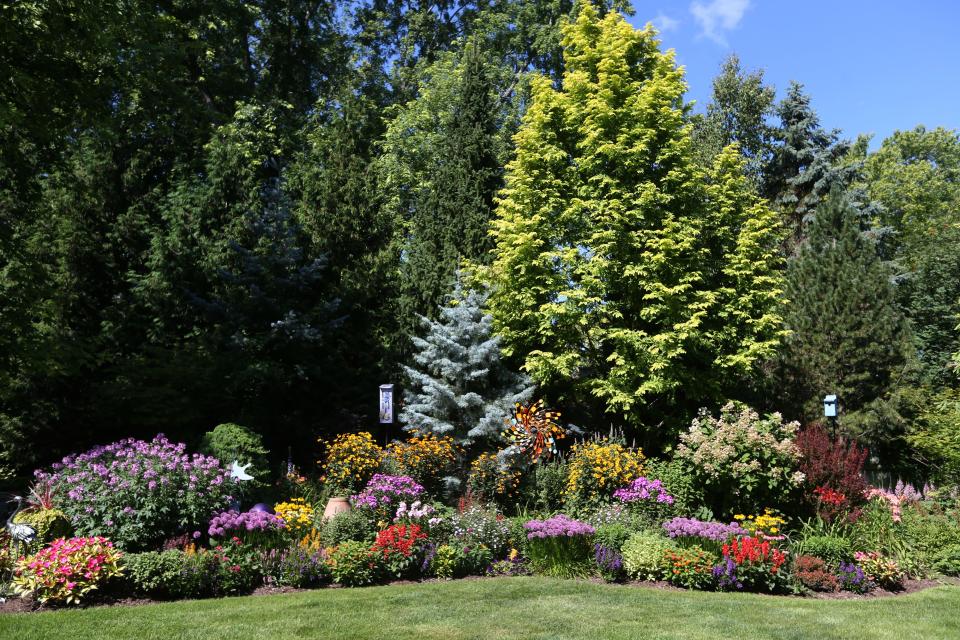
“In 2010 the regional conifer society decided to hold a tour of my garden. This was a special event. There were about 200 people.”
She added that her favorite conifer of all is Blue Cloak. “It has soft needles, is a beautiful color and it’s a stately tree.”
Others she loves are the Bruns Serbian Spruce, an upright narrow tree with a pyramidal form that has dense foliage; the Gold Heidens pine that turns gold in winter then back to green in spring, and the Gold Rush Dawn Redwood, which is a fast-growing tree that’s a bright yellow in summer, then turns to a deep auburn in fall.
Her crop of deciduous trees is also impressive.
Her favorites are the tricolored beech and the weeping beech.
“I love the tricolored beech because it comes out early, it has leaves that are a beautiful mix of pink, cream and brown, it stays in color all summer, it does not need spraying, and it has a beautiful shape.
“The weeping beech is a favorite because it’s slow growing. It never causes me any trouble. Other trees have to be trimmed. That one grows an inch a year.”
She said at one time crabapples were a favorite. But not anymore.
“I have given up on the use of crabapples because they so easily get fire blight and have to be sprayed each year. This runs into too much money.”
She said for years when she added new plants, moved them around, divided them, or dug new garden beds, she did the work herself. But now that she’s reached her golden years, she has help.
She said one employee works in her gardens about three hours a day and about five days a week from April until fall; and a crew of three helps her on weekends doing a variety of jobs, including moving trees around.
“They work fast and hard. They dig out my trees, put them on tarps and move them out. They do it in like one, two, three,” she said.
But that doesn’t mean she doesn’t take a hands-on approach in her garden.
“I can do anything standing up. I can go and buy plants, I design my gardens, I water, and I trim, she said.
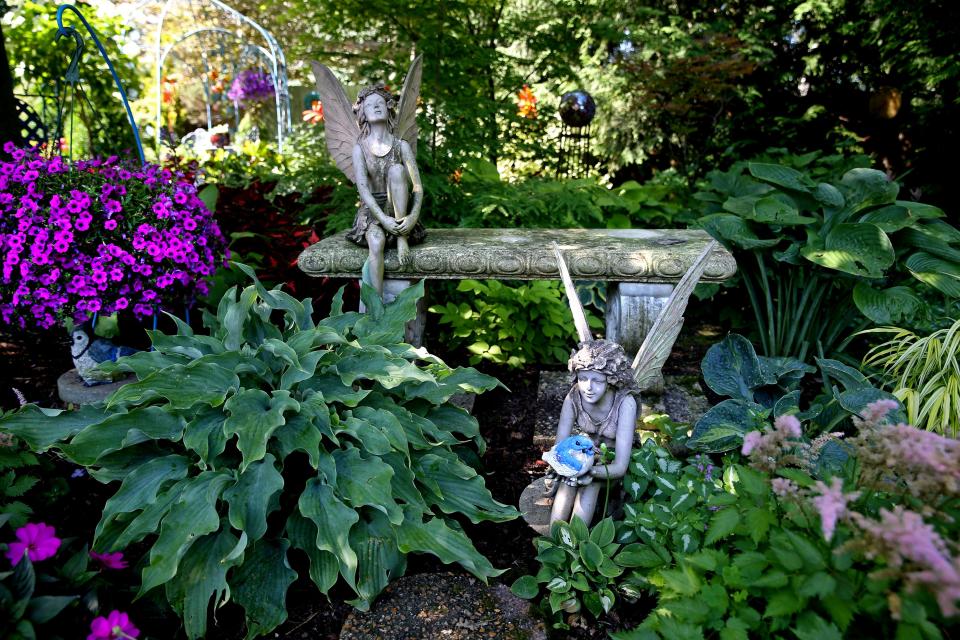
She recently talked about her gardens and her love of gardening.
Question: What is your style of gardening?
Answer: I have two styles. It’s formal in the front and in the west beds, but along the long south border it’s very natural and wild. I often wish I had a larger piece of property so I could create a more natural space with native plants.
Q: What are some things you do to make your garden beds look unique?
A: I don’t plant anything in a straight line. I break up the green plants with color. I love my smoke bush and my barberry for their colors. I’m a color person. I also am always looking to improve beds with plant arrangements, color, size, added ornaments and replacing old, tired plants with the newest plants.
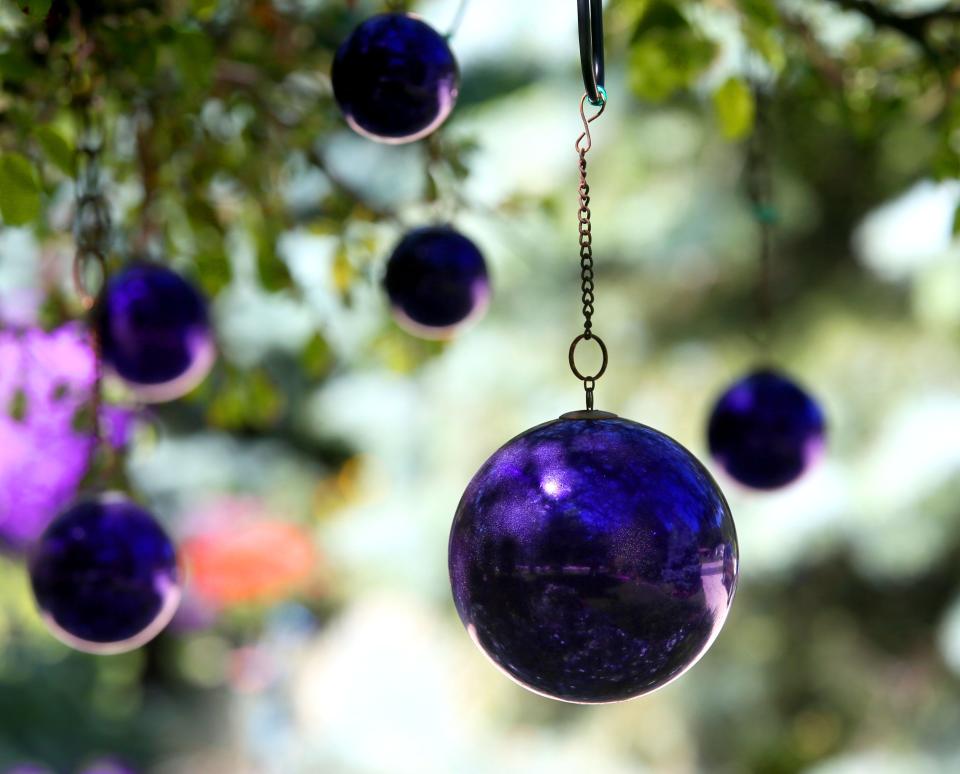
Q: In addition to the American Conifer Society, are you a member of any other garden groups?
A: No. I used to belong to the Greater Milwaukee Rose Society, the Wisconsin Hosta Society, But I have no time for more societies. I get a lot of information from the many garden publications I subscribe to.
Q: Do you only use your compost and leaf mulch in your gardens?
A: I also use coco shells in my very special beds. I like the way it looks. I never bring in dirt anymore. If you bring in dirt you also bring in weeds.
Q: Do you have much wildlife in your yard?
A: In late afternoon I see baby rabbits peacefully eating the grass, the robins fighting for water in the many birdbaths, while doves stroll through the garden paths. It is great to provide a setting to be in tune with nature.
Q: What are your favorite annuals?
A: I love plants that bloom from the time I plant them until the frost.
I plant vinca, some of the new salvias, pentas, latana, angelonia and cleomes (spider flower). This plant was a favorite of Thomas Jefferson's. It’s tall and beautiful.
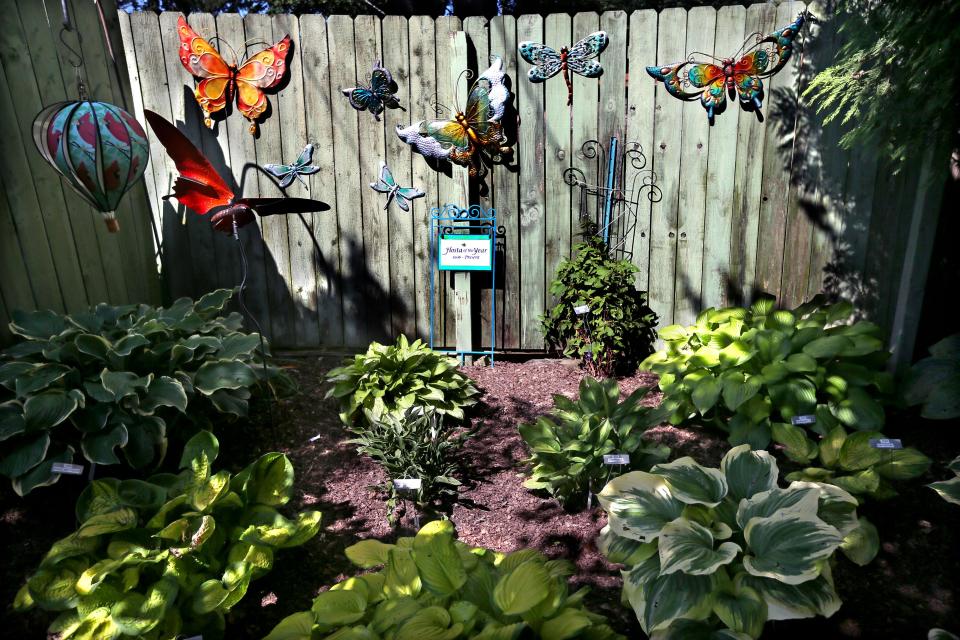
Q: What are some favorite perennials?
A: Ones that the rabbits don't find tasteful. Sedums come to mind first. There was a time when there was only Autumn Joy. This was replaced by Autumn Fire. Sedums are favored because they can thrive in Wisconsin winters, are the first to come up in spring, can take the heat, and can be multiplied without stress. Now there are endless varieties of sedums: Pure Joy, Abbydare, Brilliant, Pink Chablis, and Matrona (Stonecrop). Another favorite perennial is the hosta.
Q: Your favorite shrubs?
A: I love hydrangeas, and I have boxwood all over the garden. And I use barberries because of the variety of color. In beds where it is hard to get the hose I plant colorful barberries instead of annuals.
Q: Any gardening tips you can share with our readers?
A: Start small, visit developed gardens, read garden periodicals and visit different garden centers to check on prices and variety. Plants need trimming. The best way to keep a plant blooming is to deadhead the blooms. By clipping off the spent blooms, the plant can utilize the energy to make new flowers. In order to increase the garden’s yield, it is profitable to split and propagate strong plants. I have increased my fold by splitting many plants each year.
Q: What are some other groups that have toured your gardens?
A: The Milwaukee Art Center Garden Club, and garden clubs in Chicago and Port Washington. I’ve had a lot of garden clubs come here. Also the Wisconsin Hosta Society, and a garden club at Swarthmore College in Pennsylvania.
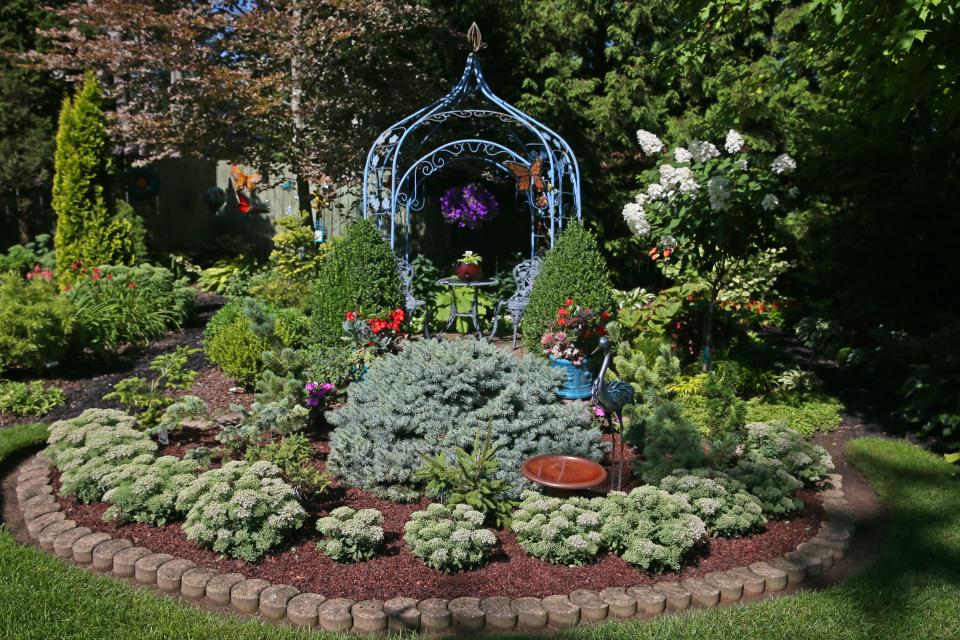
Q: What gardening challenges do you face these days?
A: The challenge I am finding is with the weather. In these recent years it is either too dry when ready to begin a new garden year, too wet, too windy, or too hot too early. Will the politicians ever get their heads together about global warming? Gardening keeps changing with the climate conditions. We have to be highly motivated to meet these challenges.
More: Woman's 'garden gone wild' shows native plants' robust tendency to thrive
More: Fox Point woman's 'garden gone wild' illustrates native plants' tendency to sprout all about
Our subscribers make this reporting possible. Please consider supporting local journalism by subscribing to the Journal Sentinel at jsonline.com/deal.
DOWNLOAD THE APP: Get the latest news, sports and more
This article originally appeared on Milwaukee Journal Sentinel: Brown Deer woman turns gardening into an art form for 43 years

